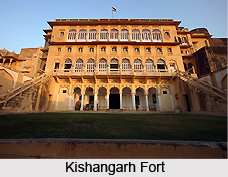 The places of interest around the city of Ajmer lie within the district boundaries. While some of the places are historically significant some are renowned for their craftsmanship. Local transportations are available for the excursion tours from the city of Ajmer.
The places of interest around the city of Ajmer lie within the district boundaries. While some of the places are historically significant some are renowned for their craftsmanship. Local transportations are available for the excursion tours from the city of Ajmer.
The places around Ajmer comprise of:-
Kishangarh: It is located at a distance of 23 kilometers from the city of Ajmer. In ancient India Kishangarh was the capital of a small kingdom ruled by a Rathore Prince, Kishan Singh. The history of this town dates back to the early 17th century. It is that place where India`s most celebrated Kishangarh School of Rajasthani miniatures emerged. The school was patronized by Raja Savant Singh whose court artist Nihal Chand immortalized the romance of the ruler and Bani Thani, a famous beauty. As tourists visit the town today it has developed as the commercial hub for trading of marble. There are heritage hotels that are located within the town.
Roopangarh: The village of Roopangarh is located at a distance of about 90 kilometers from Ajmer. There is a fort belonging to the Junia Thakurs. It was their ancestral home. Today it has been converted to a heritage hotel. Besides this there is the Roopnagar Mahal that is also worth checking out.
Makrana: It is located at a distance of 90 kilometers from Kishangarh. It lies within the district of Ajmer. It has been famous since times immemorial for its white marbles. The marble of Makrana was used for creating the grand edifices of the Mughal and the Rajput palaces. Marbles were carried from here to build the Taj Mahal and the famous Victoria Memorial in Kolkata. In the recent times beside marble quarries, there are numerous traditional craftsmen who are known for creating delicately carved marble artifacts. It is believed that their ancestors had the privilege and doing the famed inlay work in the Taj Mahal.



















